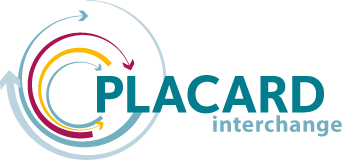In the midst of a once-in-a-generation pandemic, and on the cusp of an urgent societal transformation to slow climate change and combat its worst effects, it is more critical than ever for Europe to invest in building resilience through both CCA and DRR. Building resilience and adapting to climate risks is among the key priorities of the European Green Deal and related policy initiatives (EC, 2019). A key focus for the coming months will be rising to this challenge (Research and practice gaps: outcomes from ECCA 2019, Why CCA and DRR are crucial for achieving European Green Deal goals, Economics and finance of disaster risk reduction and climate change adaptation).
Safeguarding people, communities and economies from climate-related shocks and disasters should be one of the priorities of stimulus policies aimed at Europe’s social and economic recovery from the coronavirus. Resilience-building should be an integral part of the sustainability transition advanced by the European Green Deal, and should combine economic, technological, social and institutional innovations. This is as much a normative endeavour as it is a technical one; it requires a spirit of collaboration, solidarity and cohesion among all relevant partners.
As lawmakers proceed with preparations for implementing the European Green Deal, including in the context of responses to COVID-19, we recommend:
- Linking responses and post-COVID-19 stimuli investments to actions that build resilience in the context of climate change and other societal challenges, including contributing to the European Green Deal. COVID-19 recovery must be climate-compatible and focus on building long-term resilience, in addition to responding to short-term priorities.
- Synchronising targets, priorities and areas for action from the Paris Agreement and the Sendai Framework on Disaster Risk Reduction within the European Green Deal, maintaining a balance between mitigating greenhouse gas emissions and adapting to climate change. This will increase the effectiveness of policies and measures aimed at improving resilience, and leverage expertise from across CCA and DRR.
- Strengthening the current EU Strategy on Adaptation to Climate Change and the Union Civil Protection Mechanism to effectively address the increasing risks posed by a warming world. The DG CLIMA guidance on developing adaptation strategies and DG ECHO advice on risk assessment should be updated, taking into account the results of foresight assessments.
- Using the European Commission’s Mission on Adaptation to Climate Change including Societal Transformation to complement the priorities put forward in the strategies above. This mission should mobilise citizens and communities, and help to design new forms of bottom-up, equitable, inclusive and sustainable economic development pathways for a climate resilient coronavirus recovery and European future.
- Connecting existing and new online portals and platforms as data, knowledge and good practices continue to increase. This requires improving the uptake of existing technologies (e.g. tagging systems), the development and adoption of shared taxonomies, and investment in innovative technologies (e.g. artificial intelligence and machine learning). Effective implementation of these technologies relies on the development of international standards for information and knowledge management, and can facilitate access, analysis, cross-learning and sharing.
- Increasing institutional and financial support at the EU level and between Member States to enhance mechanisms for building resilience in an uncertain future. This includes investing in sharing data, knowledge and good practices to assure that CCA and DRR are better reflected in all decision-making processes, including those related to financial flows.
- Assuring that all European financial investments are resilient and sensitive to future disasters and climate risks, including by employing robust risk screening processes. This requires improving the Sustainable Europe Investment Plan by incorporating relevant aspects of CCA and DRR to the European Green Bond Standard and the EU Green Taxonomy, facilitating the disclosure of climate-related risks though amending the European Directive on non-financial disclosures (Directive 2014/95/EU), and exploring opportunities to manage systemic risk to EU financial systems through EU-level risk transfer mechanisms such as reinsurance services or sovereign insurance funds.
- Creating a new body, the Centre for an Open, Resilient Europe (CORE), building on the successes of PLACARD. There remains a pressing need for an organisation committed to bridging CCA and DRR across Europe and supporting the implementation of the European Green Deal. CORE’s central responsibilities will be to:
-
- Convene the CCA and DRR community in Europe, including hosting expert workshops, empowering communities and individuals at all levels, and continuing to support the ECCA conference series;
- Innovate by developing new tools and approaches to support decision-makers in climate risk management across the public and private sector, and supporting new, relevant initiatives with seed funding;
- Learn, with a focus on knowledge management, developing common standards and sharing best practices, as well as providing training to professionals on a variety of relevant topics and skills.

